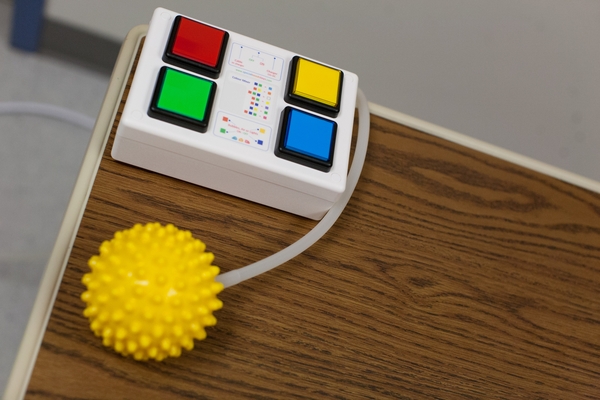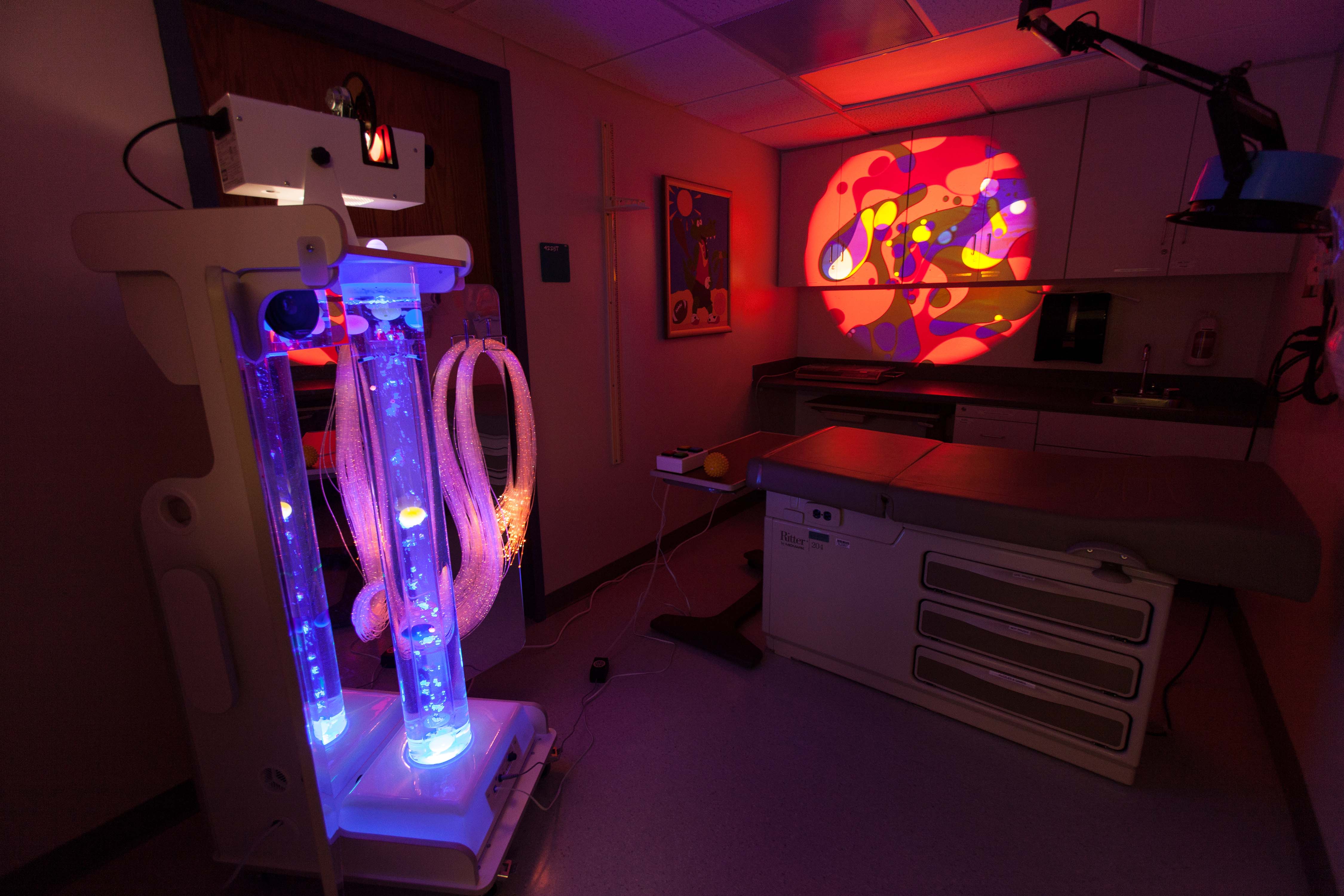As Chris Brown, director of the UF Health Child Life Program, and Ron Farb, co-founder of the Climb for Cancer Foundation, set up the multisensory environment machine, the excitement among the pediatric patients is drowned out by the “oohhs” and “aahhs” of the doctors and nurses.
“Can I get a procedure,” one of the patients asks, “I want to be the first to use it!”
The device might seem like a toy – or a massive lava lamp – but in reality, it is a cutting-edge instrument used to ease the fears of patients undergoing medical procedures or other stressors. Nicknamed the “ultimate distraction tool,” the multisensory environment machine was recently donated to UF Health Shands Hospital by the Climb for Cancer Foundation.
“This is an amazing tool that we would not otherwise have access to, because we just don’t have the resources,” Brown said. “We are thankful the Climb for Cancer founders, Ron and Dianne Farb, understand what kids and families go through here. They are so invested and sensitive to what the patients and families are dealing with, that when they heard about this machine and saw the pictures, they were immediately on board.”
Just a week after learning about the device, Climb for Cancer had found a way to have the new machine delivered to UF Health Shands Children’s Hospital.
One of the ways Child Life specialists help patients cope with procedures or treatment is through alternative focus interventions — a practice that distracts the patient from a painful, scary or particularly long procedure. Multisensory environment devices have proven to be effective in achieving this.
The multisensory environment cart opens into three parts, with a water-filled glass tube in the center. The tube displays fluttering water bubbles, surrounded by a collection of moving lights and colorful balls. A projector, which can be aimed at the wall or ceiling, displays several melting colors in a soothing, revolving motion.
In addition, the machine features an aroma therapy component that emits a variety of relaxing scents. A CD/MP3 player allows the patient to play virtually any song that would help calm them — from the latest singles to various nature sounds. A remote box allows the patient to change the speed of the bubbles, the rhythm of the water flow and the colors projected. They can also squeeze a texturized ball to manipulate the movement of the bubbles.

Originally invented for children and adults with sensory integration and processing challenges, the machine features tools that have been validated through research, to not only distract the patient, but to calm and slow his or her breathing and even lower heart rate and blood pressure.
“Dianne and I feel very strongly about psychological healing, which includes mind, body and spirit. It’s not just a matter of putting drugs in someone’s arm,” Ron Farb said. “When you’re going through a scary or painful procedure, if something like this – even momentarily – takes your mind off of what you’re going through, it is a tremendous benefit.”
Ideally, Child Life specialists introduce the machine to the patient before it is used as a distraction tool, allowing them to pick the features that they feel will best help them.
“It gives them something to look forward to and it engages them in their own coping plan,” Brown said. “It’s also a great way to counteract feelings of helplessness and lack of control or power, which are very commonly associated with hospitals. Letting them choose which color they want the bubbles or which aroma scent they want to smell—it all helps. Every little piece of control we can give back to a child is huge.”
Because the machine is completely portable, Child Life specialists and other team members are able to use the machine at the bedside and in treatment rooms.
“Our ultimate goal is to make treatment as pain-free and anxiety-free as possible,” Brown said, “and this tool adds another resource to be able to do that.”
“We are becoming a true children’s hospital now,” Farb added, “and we can’t call ourselves a children’s hospital unless we take care of the needs of the whole child—not just the medical needs. I think this is just going to be the start.”

